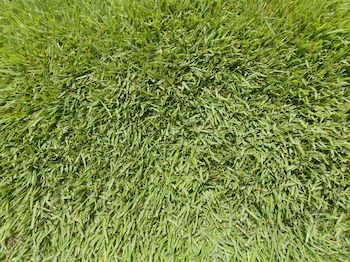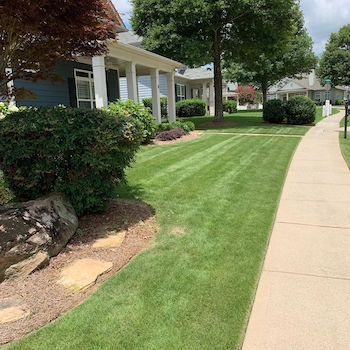 Meyer Zoysia also known as Z-52, has been a successful medium bladed zoysia grass for over 60 years throughout the southern United States. This grass was selected primarily for its texture, color, and vigor compared to other zoysiagrass selections. Meyer Zoysia develops a very dense turf, demonstrates good cold tolerant and grows well in partial shade. Meyer Zoysia grass is best adapted to the transition zone where summers are too hot and humid for cool season grasses and winters too cold for bermudagrass.
Meyer Zoysia also known as Z-52, has been a successful medium bladed zoysia grass for over 60 years throughout the southern United States. This grass was selected primarily for its texture, color, and vigor compared to other zoysiagrass selections. Meyer Zoysia develops a very dense turf, demonstrates good cold tolerant and grows well in partial shade. Meyer Zoysia grass is best adapted to the transition zone where summers are too hot and humid for cool season grasses and winters too cold for bermudagrass.
Wide Bladed
to Thrive
7-14 days
- Blade-width: 4-5mm
- Emerald Green Color
- Soft Feel
- Soils: Sandy, Clay
- Growth: Lateral
- Very Good Spring Green-up
- Very Good Fall Color Retention
- Excellent Wear Tolerance
- Very Good Drought Tolerance
- Very Good Cold Tolerance
- Excellent Weed Control
- Excellent Insect Resistance
- Good Shade Tolerance (5 hours)
- Recommended Mowing Height: 1-2"
Meyer Maintenance:
WATERING
Once established, zoysia should receive approximately 1 inch of water per week, by either rain or irrigation. Mature lawns should receive deep, infrequent waterings, approximately every 5 to 7 days, to promote a healthy, extensive root system. Watering too frequently will result in shallow roots and weaker turf. Ideally, water in the early morning to minimize evaporation. Remember you need to maintain soil moisture even during dormancy.
Water requirements may vary from lawn to lawn due to soil conditions, terrain, etc. In order to practice responsible water use, you should learn to recognize signs of dry turfgrass. Zoysia in need of water will have a greyish cast, rather than its normal green color. The grass blades may also shrivel and have a pine-needle appearance. Turfgrass in this condition should be watered immediately. Inspecting your lawn frequently will help to detect water requirements for your lawn and to avoid over- or under-watering. Consult our watering guide for greater detail.
MOWING & EDGING
 Grass should be mowed on a regular basis during its growing season. Optimal mowing height for residential lawns is 1 to 2. Keep mower blades sharp for a clean cut. As a general rule, never cut off more than 1/3 of a grass blade at a time. Should your grass get too tall, take it down gradually over the next few mowings. If you are mowing frequently enough, there is no need to remove clippings, as they are actually beneficial if left to decompose naturally.
Grass should be mowed on a regular basis during its growing season. Optimal mowing height for residential lawns is 1 to 2. Keep mower blades sharp for a clean cut. As a general rule, never cut off more than 1/3 of a grass blade at a time. Should your grass get too tall, take it down gradually over the next few mowings. If you are mowing frequently enough, there is no need to remove clippings, as they are actually beneficial if left to decompose naturally.
De-thatching can be done after April 15th if excessive thatch is a problem. However, properly maintained zoysia should not require de-thatching. If excess thatch occurs, decrease the amount of nitrogen fertilizer used, or convert completely to organic fertilizer. Organic fertilizers naturally help eliminate thatch in zoysia and contribute to healthier turf.
FERTILIZATION
Fertilizer should be applied 3 to 4 times per year, using the following schedule as a general guide. Always use a high-quality turf-grade fertilizer. Use a rotary-type spreader for best results. Apply in two different directions to avoid streaking. Fertilizer should be watered in immediately. To maintain zoysia color, light applications of nitrogen fertilizer (1/2 recommended rate) may be applied between the recommended applications. Only apply if unsatisfied with turf color.